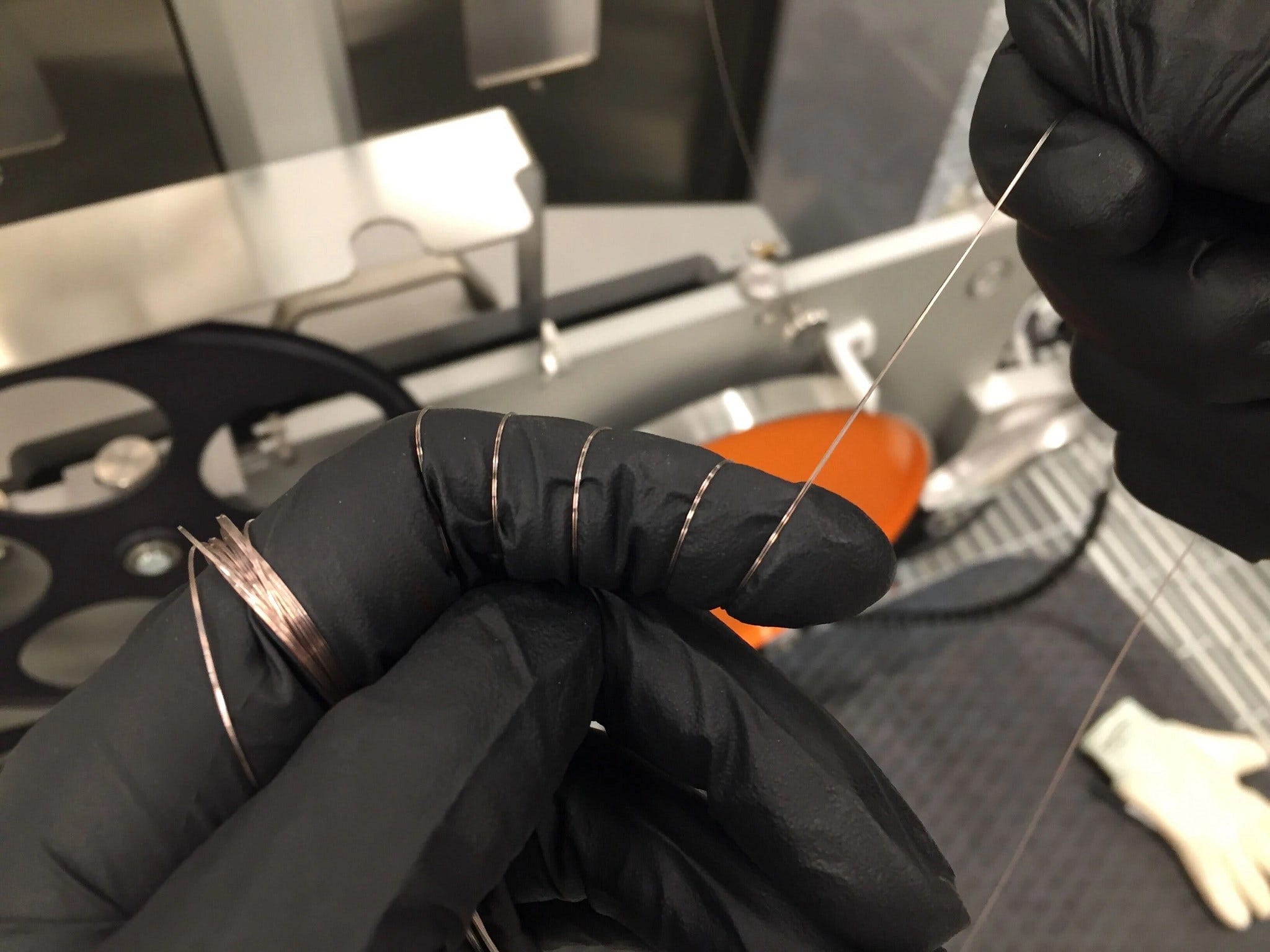IU, Cook Join Forces to Build ‘Smart’ Fibers
 IU's FAMES Lab will develop smart fibers with sensors distributed along their length for Cook to test on its devices
IU's FAMES Lab will develop smart fibers with sensors distributed along their length for Cook to test on its devices
Subscriber Benefit
As a subscriber you can listen to articles at work, in the car, or while you work out. Subscribe NowDoctors have long been able to use tiny cameras or medical imaging techniques to see inside the body—catheters and endoscopes that provide visuals are commonplace—but visionaries believe physicians could soon “feel” what’s going on, not just see. Bloomington-based Cook Medical, a medical device powerhouse that specializes in minimally invasive procedures, wants to pioneer this next chapter. The manufacturer aimed to partner with the brightest minds in the world, and ironically, the search led to Cook’s own backyard: an Indiana University lab with internationally renowned expertise in making “smart” fibers that are as thin as human hairs.
Cook Medical and IU’s Fibers and Additive Manufacturing Enabled Systems (FAMES) Laboratory recently forged a master research agreement, marking the first time the two Bloomington powerhouses have combined forces in a research setting.
“It seems simple to say it, but [catheters and endoscopes] are ‘dumb’ today; they’re just mechanical pieces of metal, polymer or plastic. They can do imaging and give a visual roadmap, but they don’t know what’s going on locally,” says Cook Medical New Ventures Corporate Research Program Director Sean Chambers. “[Learning about Alexander Gumennik’s] work was the ‘Aha’ moment that we should do this. His abilities are state-of-the-art and unique in the world.”
Gumennik, an assistant professor of intelligent systems engineering, is director of the FAMES Lab at IU’s Luddy School of Informatics, Computing and Engineering. The lab is an outgrowth of a very young program at Luddy; the intelligent systems engineering department was created just five years ago, yet has already achieved global prominence, says Gumennik.
“I don’t think there’s a comparable lab of its scale in academia in the U.S. at any university—including MIT,” says Gumennik, who came to IU from MIT. “It’s not every day that a university starts an engineering department and has the means to fund daring problems. I’ve been given all the freedom to build the best lab for fiber devices in academia in the U.S.”
The FAMES Lab focuses on smart fibers, which can be likened to a thread—sometimes as thin as a human hair—with embedded sensors. These fibers could be woven into the structure of a catheter or endoscope, for example, and provide doctors with real-time measurements, such as temperature, heart rate or blood pressure during a procedure.
Cook is providing $350,000 to support the research. The FAMES Lab will develop fibers that Cook can embed in its devices and test their performance.
“There are pressures and temperatures that [a doctor] might want at the tip of a guide wire that’s navigating the body,” says Chambers. “We think this technology could help us advance that. For example, if [clinicians] are doing a procedure and there’s an occlusion, and they want to know the pressure across that occlusion—that’s hard to do today. Being able to add that internal ‘vision’ to these devices, so they can really tell what’s going on locally, could be really exciting for patient care.”
Gumennik says IU’s “modern, forward-looking” approach to engineering is “very much based in artificial intelligence, data management and cloud computing.” Cook acknowledges that IU’s “world-class” strength in informatics is especially attractive, “because like everything else, medical care is driven by huge data sets.”
“If we can actually start measuring parameters, that might allow us to get large datasets, so we can analyze and improve our products in the future, because there’s information we don’t know,” says Chambers. “We don’t know how the flow is really disrupted locally with some of the devices and some of the procedures we’re doing.”
Both Cook and IU emphasize the significance of the partnership being a master research agreement, meaning Cook can tap into the expertise of researchers in various disciplines within IU’s eight campuses. Sorting through intellectual property issues is always a challenge, but IU and Cook say creating a structure that’s advantageous for both parties blazed a trail for the master agreement.
“It’s a door open that was before closed,” says Gumennik. “I acknowledge the value of pure science, but it’s very fulfilling when you see something come out of your work that can be useful in the real world—and not just useful, but make peoples’ lives better in a very obvious way and maybe save some lives.”
Chambers says the partnership also formalized an internship program that will allow Cook to tap into the technical expertise of IU students.
Gumennik explains how his lab could create fibers—wires as thin as a human hair—that could be integrated into the exterior of catheters.


